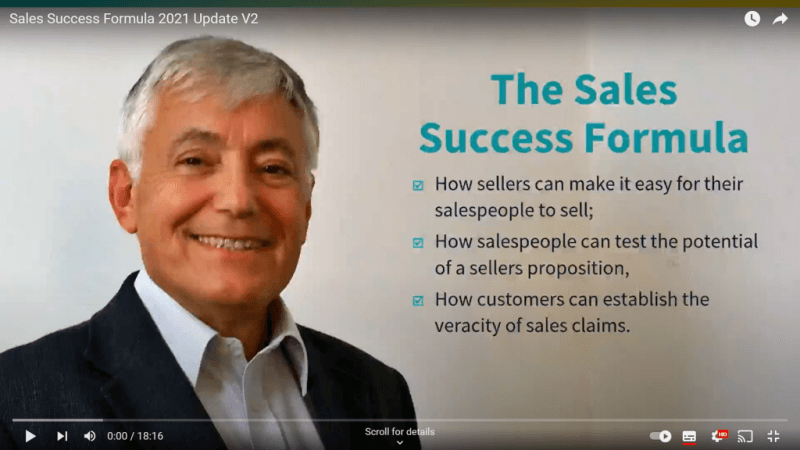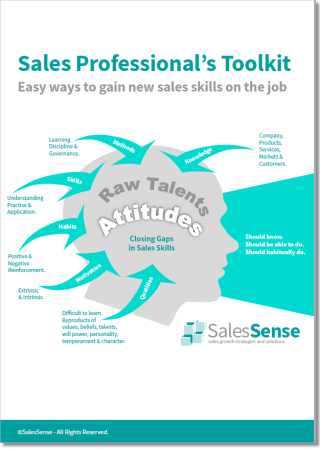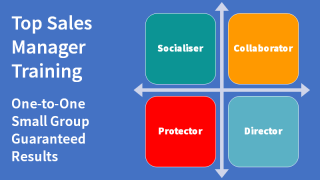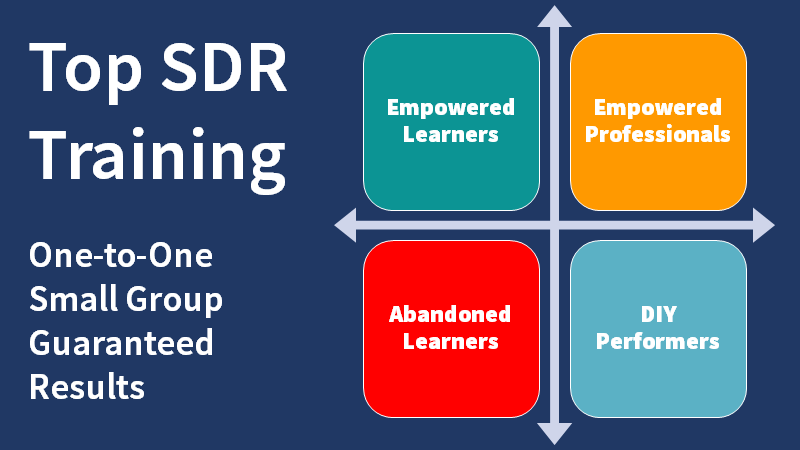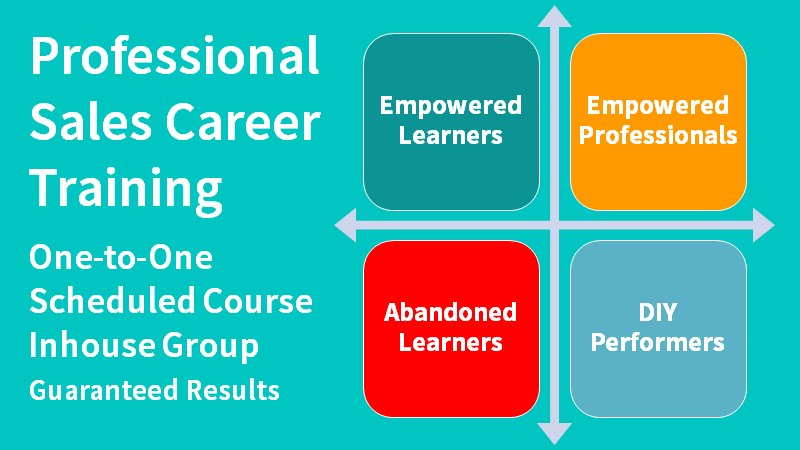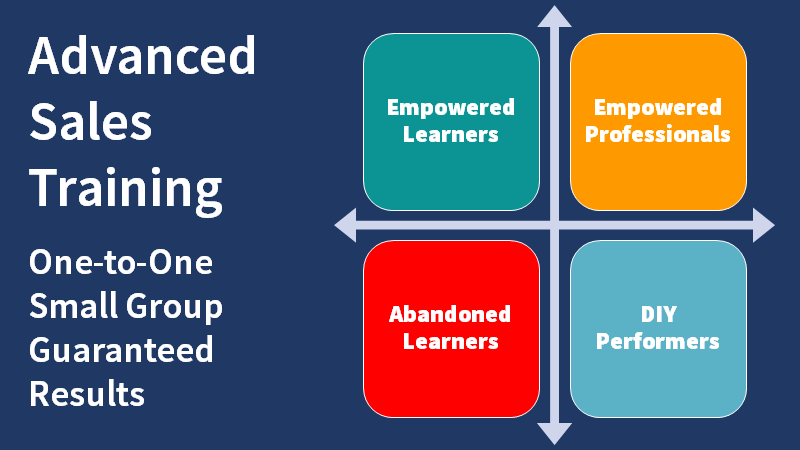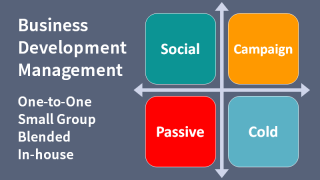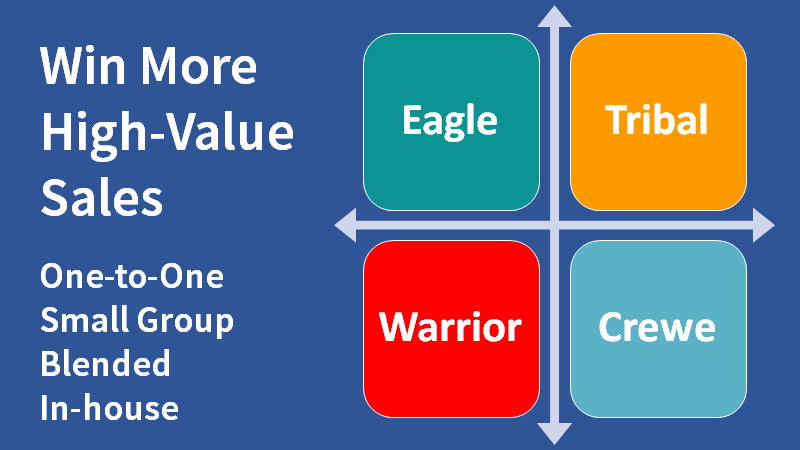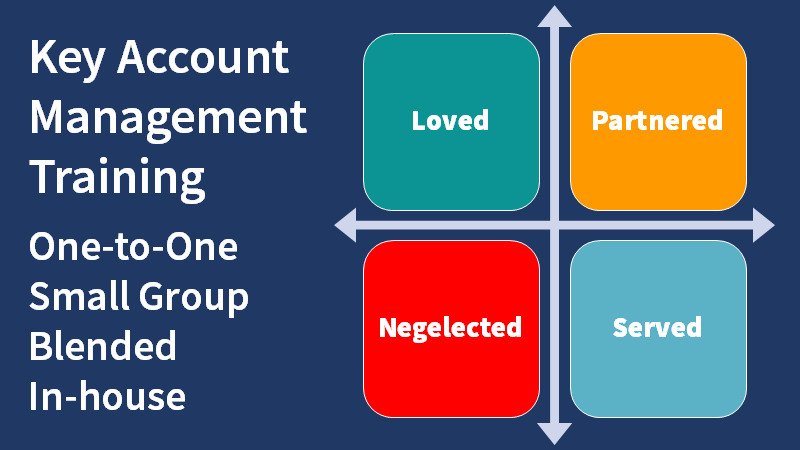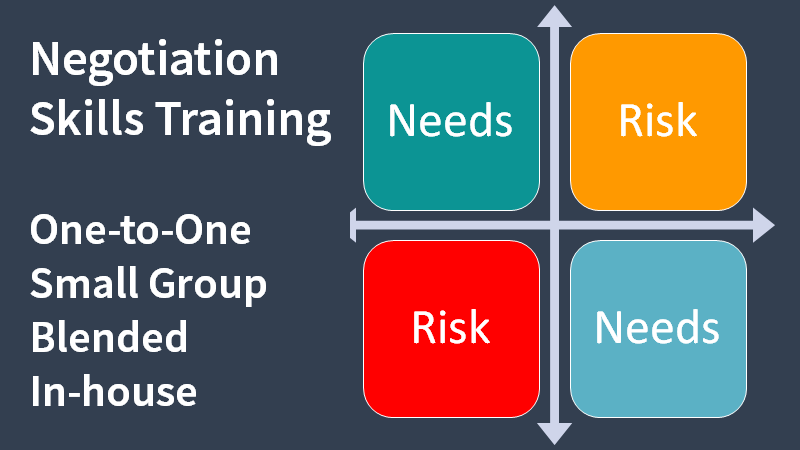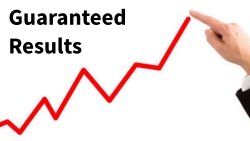Sales Success Formula transcript - part two - effective sales strategies.
Welcome back. I am delighted that you have decided to complete your study of the Sales Success Formula. Whether you are an individual looking for ways to get better results, or a manager seeking effective sales strategies to increase the performance of a team, the formula provides a proven and reliable platform for developing a best-in-class sales capability. See part one here.
Taking the decision to apply the formula to your selling process is a definite step towards greater success and higher levels of performance.
Here is a quick recap. In part 1, I explained:
- How to develop better responses to the top six customer questions.
- How to quantify the business value of what you sell.
- How to build compelling proof that diminishes the need for selling skills.
- How to find more prospects who need what you offer.
In this part of the presentation, I’ll explain:
- How to avoid wasting time and effort on prospecting activities.
- How to get a proper hearing more often.
- How to have more prospects engage.
- How to deal with the most difficult objections.
- How to create a sales process.
- How to leverage the three secrets of effective training.
Following on from the analogy about selling bread to hungry people and the story about three apprentice archers . . .
Repeatable and Proven Approach Method
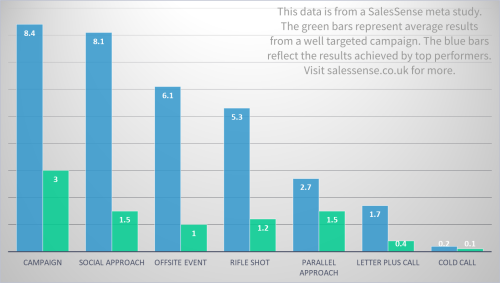
Once you have done the work to characterize your bread and found some hungry people, you need a way to get their attention.
As reflected in the results of a meta-study, the best approach is to put your proposition in front of likely buyers on a regular basis without allowing the message to become stale.
These days there are probably many others selling your kind of bread. Your prospects are assailed by enticements and calls from numerous bread sellers yet few of these competitors persist for long enough.
If you have completely identified your proof it should be easy to create a dozen or more messages for a variety of channels such as voicemail email social media and old-fashioned letters.
With this treasure chest of interesting tidbits and compelling justifications, it becomes easy to mount a sales campaign over a period of months.
Sooner or later the hungry prospects you have selected will either succumb to your persistence or ask you to stop sending messages.
A 'no' is as good as a 'yes' because you can take them off the list or you can pause your campaign and try again later.
Reliable Objection Responses
Once you have gained the attention of someone who can benefit from what you sell you are likely to hear objections. They are part of the natural thinking process. If you don't hear any objections it is likely that there is no interest.
When subjected to sufficient forethought planning and preparation, objections become stepping stones on the way to a sale.
All of the obstacles thrown up during the selling process can be dealt with this way.
As Voltaire put it, “No problem can withstand the assault of sustained thinking”.
When you are refused access to decision-makers you need to say something that keeps the refusers onside while persuading them to facilitate an introduction.
The best turnarounds use the reason for the refusal as the reason for agreeing to the request.
Here's an example of a policy-based refusal:
"Policy is important in our organization too. It usually helps us get better results. That's why we asked to discuss the issues with stakeholders directly. We have found that it leads to a better solution. One that more precisely meets the needs of everyone. Could we work together to make this happen?"
Even the best turnaround solutions may still fail yet many will succeed, certainly many more than the solutions that remain untried.
With a little thought, it is easy to anticipate most of the objections the potential customers will voice.
While your sales prospects will express these concerns using different terminology, this list includes the vast majority of all the objections that you will hear:
- When they won’t say how much they can spend
- When they won’t share their data
- When they won’t allow access to key people
- When they won’t talk after your proposal is in
- When they say you are too expensive
- When the competition are cheaper
- When they are concerned about support
- When they have heard bad things about your Company
- When they don’t like you, personally
Even these last two objections can be confidently addressed with a little forethought and preparation.
Even when there is a personality conflict.
Sales Process Example
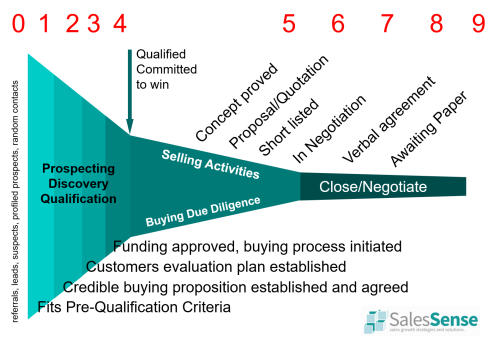
Having a sales process has been proven to increase sales results.
This diagram presents a buyer-seller interaction as a sideways funnel.
In the first stage, use a pre-qualification filter to eliminate suspects that are a bad fit.
Stage two should involve obtaining agreement from the customer that a credible buying proposition exists.
The customer's evaluation plan might also be called the buying plan. It should contain all of the steps that must be completed before a decision will be taken.
A potential sale should not be classified as an opportunity until the customer has initiated a buying process.
Selling activities need to align with the steps in the customer's formal buying process.
The labels and stages in the framework should be adjusted to reflect the stages in a typical customer's buying process.
It's important that the bottom of the funnel takes into account the formal approvals that are embedded in a typical customer's procurement policies and procedures.
Reasons for Having a Sales Process Framework
Having a sales process framework has many benefits.
It aids anticipation of customer thinking, facilitates planning, and guides preparation.
Without a plan, actions are random and may or may not be effective.
With a plan, actions are focused and consistent. Progress can be measured and results analysed.
Having a sales process helps increase collaboration between buyer and seller and shortens the cell cycle.
It helps salespeople recognise opportunities to move the sale forward and increases their control over the sales process.
A sales process is a framework rather than a cage. It is an aid rather than a constraint.
As a result of using a process, actions become considered and deliberate instead of random or opportunistic.
Efficient and Effective Training
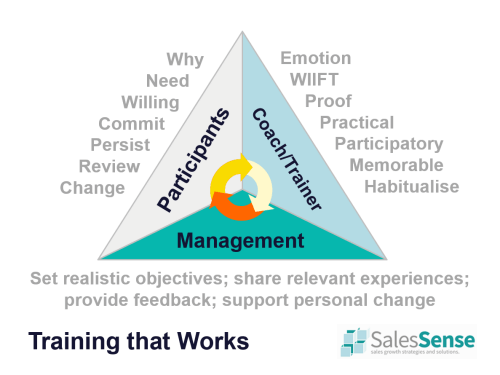
For it to be effective, all this thinking must be documented in policies and procedures and then embedded in the way things are done.
All the planning for thought and preparation can be wasted if those who must put it into action are not part of the plan.
Effective training rests on three foundations.
Participants need to know what the training is for and why they need it. They must begin knowing what they will be expected to do differently as a result of the training.
Having good material and an inspiring trainer is not enough. The trainer must connect the training with the emotional need for action and the benefits of the proposed changes. Oh and uh WIFT stands for 'What's In it For Them'.
Managers must take the time to become familiar with the training content so that they can support downstream behavioural change.
Effective training depends on the commitment of all three groups, the participants, the trainers, and the managers.
All three must be fully invested in the purpose and intended outcomes of the training.
Resources to Help
Throughout this narrative, I have set about passing on as much of the good stuff as I could fit within the time available. This training session and the Sales Success Formula is yours to use. Please pass it on to your colleagues, team members, suppliers, business partners, and friends.
If you would like to use the formula but don’t have the resources to do the necessary work, we can help.
Using the Sales Success Formula is a challenge. If it were easy, world-class performance would be the norm. It requires a great deal of effort and time to gather the evidence and develop the necessary materials.
Salespeople need to adapt and practice to accommodate new ways of working.
Most businesses are too busy with day-to-day pressing priorities to find time for the work, yet the performance upside is real and can be realised.
Instead of struggling to implement the sales success formula yourself, you could have us provide you with the necessary temporary resources.
We would:
- Develop convincing answers to the top six customer questions on your behalf.
- Gather the proof that your stuff does what you claim.
- Characterise and optionally identify the right prospects.
- Write six months' worth of compelling prospecting messages.
- Craft effective objection turnaround solutions.
- Define your sales process framework and help you integrate it with your sales tools.
- Compile everything into a unique sales resource for staff to use in campaigns, overcome sales obstacles, and increase performance.
- Train your salespeople to use the material, your sales process, and the messages effectively.
With your sales success formula defined and integrated into your selling process, new salespeople would reach break-even and become productive much sooner and existing salespeople would become more consistent, focused, and effective.
Some customers have used the sales success formula to increase sales by more than 30 percent.
When you use our services, we guarantee a return of at least five times the fees.
If you think your sales performance could be better, get in touch for a free consultation. Call 01392 851 500 or schedule a call in my diary:
Schedule an informal conversation with me now.
The Sales Success Formula was written and narrated by Clive Miller
If you lack the time or resources to make use of the Sales Success Formula or if you are looking for effective sales strategies to increase sales performance, we can help. Telephone +44 (0)1392 851500. We will be pleased to learn about your needs or discuss some options. Alternatively, send an email to custserv@salessense.co.uk for a prompt reply or use the contact form here.
